Summary / TL;DR
Keyword stuffing refers to overusing keywords in web content to manipulate search engine rankings, which can harm SEO performance. This outdated tactic includes repetitive keyword use, irrelevant terms, and hidden keywords—either in visible text or invisibly through colour-matching or metadata. Such practices decrease readability, undermine user experience, and risk Google penalties that lower visibility or remove pages from search results altogether. To avoid stuffing, maintain keyword density below 2%, assign one primary keyword per page, and use natural, long-form content that includes secondary keywords and appropriate keyword placement across headings, meta tags, and images. Effective keyword strategies boost SEO rankings through relevance and content quality, not saturation.
Search engine optimisation, or SEO, is something we’re all pretty familiar with. By using just the right keywords and grasping how they affect rankings, you can boost your website’s visibility significantly.
Yet, some businesses try to take shortcuts in optimising their sites for search results. This often leads to the mistake of overstuffing keywords. Many believe that cramming in as many keywords as possible will improve their SEO rankings, but that’s not the case.
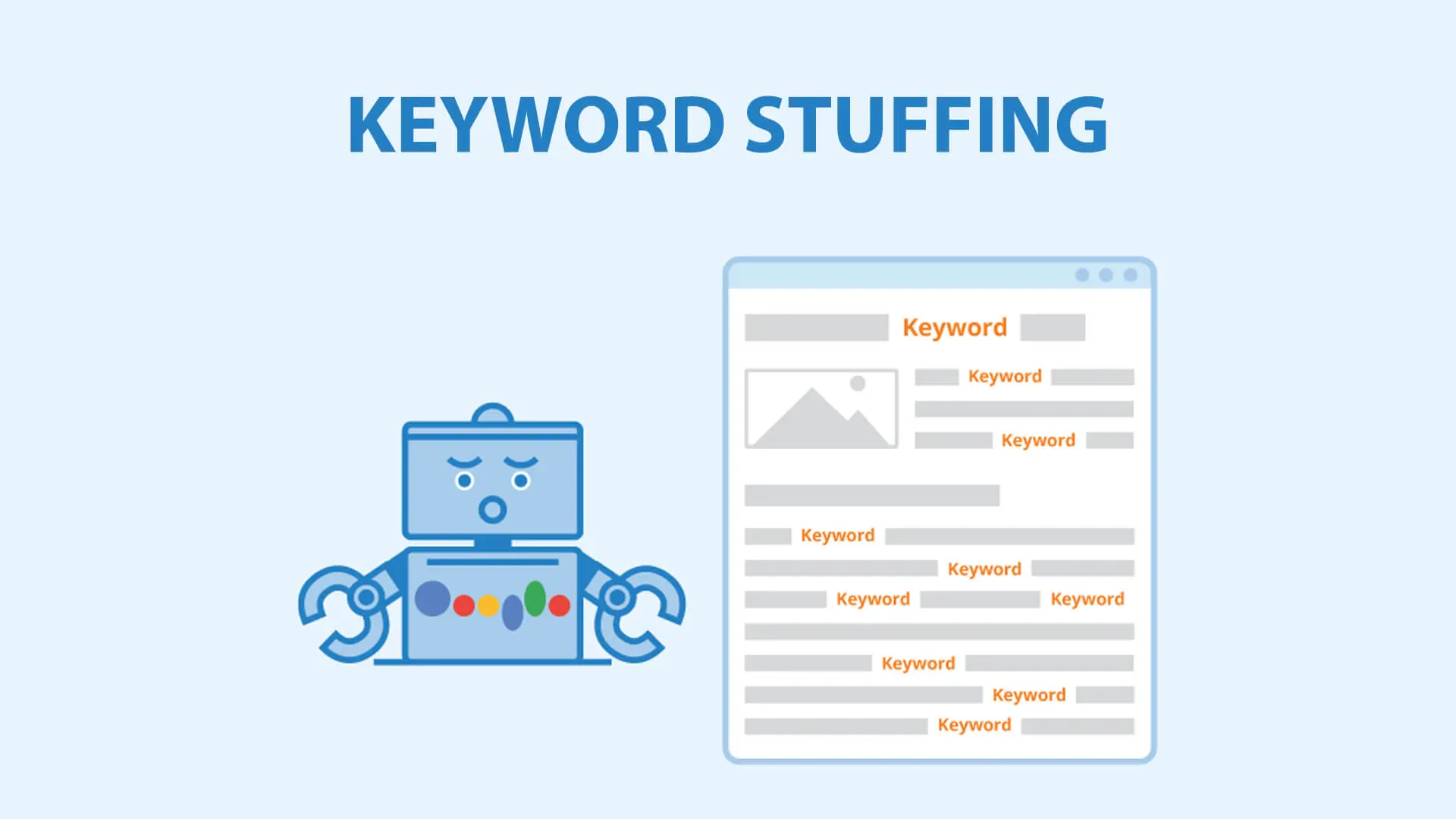
The story is very different, as unnecessary keyword stuffing can negatively impact your website’s SEO rankings and visibility. So, what can you do to avoid stuffing keywords?
We’re here to help you learn to tackle this issue. This article will discuss the different ways in which stuffing keywords can be bad for your website. We’ll also talk about some easy tips and tricks that might help you use keywords correctly and avoid stuffing keywords.
So, without further ado, let’s begin!
Want to receive updates? Sign up to our newsletter
Each time a new blog is posted, you’ll receive a notification, it’s really that simple.
What Is Keyword Stuffing?
The term 'keyword stuffing’ refers to the practice of loading a webpage with keywords and numbers to attempt to manipulate search rankings on Google and other search engines. It is common for these words or phrases to appear in a list or group or out of context (not in natural prose). Using keywords or numbers on your pages can lead to an unsatisfactory experience for users and harm your website’s ranking. Make sure your content stays relevant, informative, and uses keywords appropriately and in context.
Blogs or websites often stick to using the same target keyword repeatedly in an attempt to boost search engine rankings. Although this practice is a bit outdated in optimisation strategies, many brands still rely on keyword stuffing to boost online visibility with promotional content.
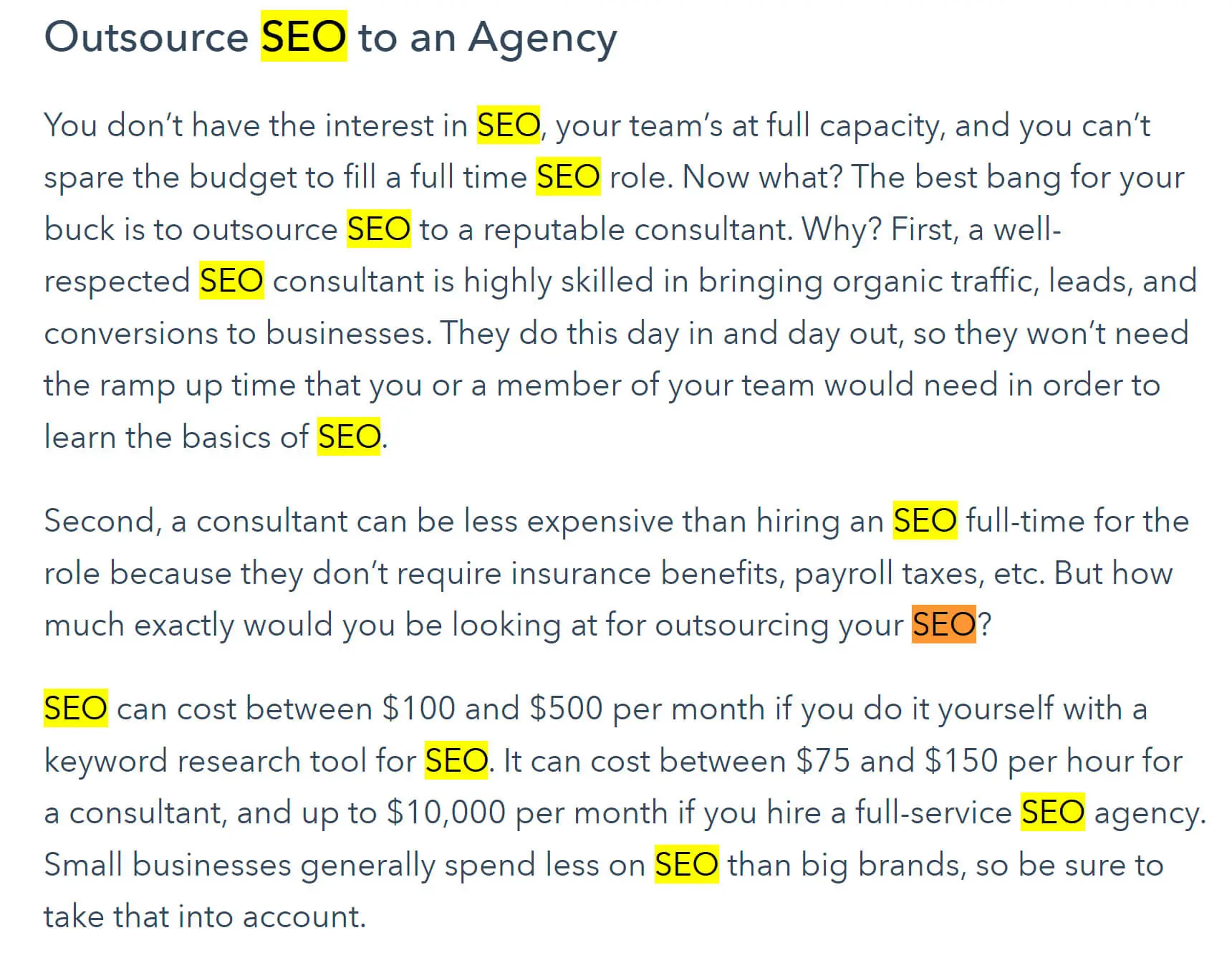
Brands usually use visible keyword stuffing to promote their online content and blogs. This technique of visible keyword stuffing examples includes:
- Repeating phrases and words unnecessarily
- Adding words that are not contextual
- Inserting the exact keywords and block of texts repeatedly
- Adding irrelevant keywords
Many brands go overboard by repeatedly using the exact words and texts while applying the keyword stuffing strategy. An example of stuffing keywords is when a brand uses the target term more than usual, ultimately hampers the website’s rankings in search engine results pages in the long run.
For instance, if a bathroom equipment store uses the term “toiletries” too often, that can be considered visible stuffing.
What Is Keyword Density?
When creating online content, use the formula below to avoid keyword stuffing. This SEO percentage helps figure out how often you can use a keyword in your blog without overdoing it.
You can calculate it by dividing the number of words in a copy by the number of times a keyword appears. Thus, the formula stands as follows:
Keyword Density = Total number of words in a copy/Number of times a keyword appears.

Though there’s no exact number for keyword density, keeping it under 2% is generally advisable to prevent stuffing. This formula can help assess whether your content’s density might affect SEO rankings.
What Is Invisible Keyword Stuffing?
To avoid negative user experience and improve the readability of their blog posts, brands and web pages often use the tactic of invisible keyword stuffing. In this case, they are essentially filling pages with keywords, but the readers can’t track them easily.
Invisible keyword stuffing includes hiding texts or keywords from the readers by changing their font colour to match the background. So, even if the words are hidden from the readers, they’ll be displayed to the search engine crawlers.
Furthermore, repeating keyword texts within the page’s code is an example of invisible keyword stuffing. Using extra keywords in the blog posts’ comments, meta tags like titles and descriptions, or title tags can also lead to invisible keyword stuffing.
It may look like the brands are tricking the search engines into getting higher SEO rankings using these keyword-stuffing tactics. But in reality, these tactics can hamper the website search rankings in a big way and negatively impact brands’ digital marketing strategies.
How Can Keyword Stuffing Affect Your Website?
When you start creating blog posts for search engines and stop writing for the readers, your website begins to suffer. The quality of your online content becomes substandard at best, and you start losing readers. And that’s the result when your website fails to attract visitors due to the tactic of keyword stuffing.
Regarding content marketing, focus on creating valuable information-rich content that uses keywords appropriately. However, the tactic prevents you from creating engaging web content that can attract readers. Using repetitive keywords and inserting unnecessary text makes the content tedious and challenging to read for your audience.
It also creates a negative user experience and can harm your website’s online visibility by driving the readers away. You might lose potential customers for your business, so you might think that keyword stuffing will help you gain more readers, whereas it might do just the opposite. The SEO rankings of your website might suffer because of it.
Furthermore, stuffing search terms, in a sense, can lead to search penalties, as all search engine variations highly condemn it. So, if you decide to fill the page with unnecessary keywords, it will not improve your search rankings but will surely decrease them. You can even face a Google penalty that will remove businesses’ websites from the search engine.
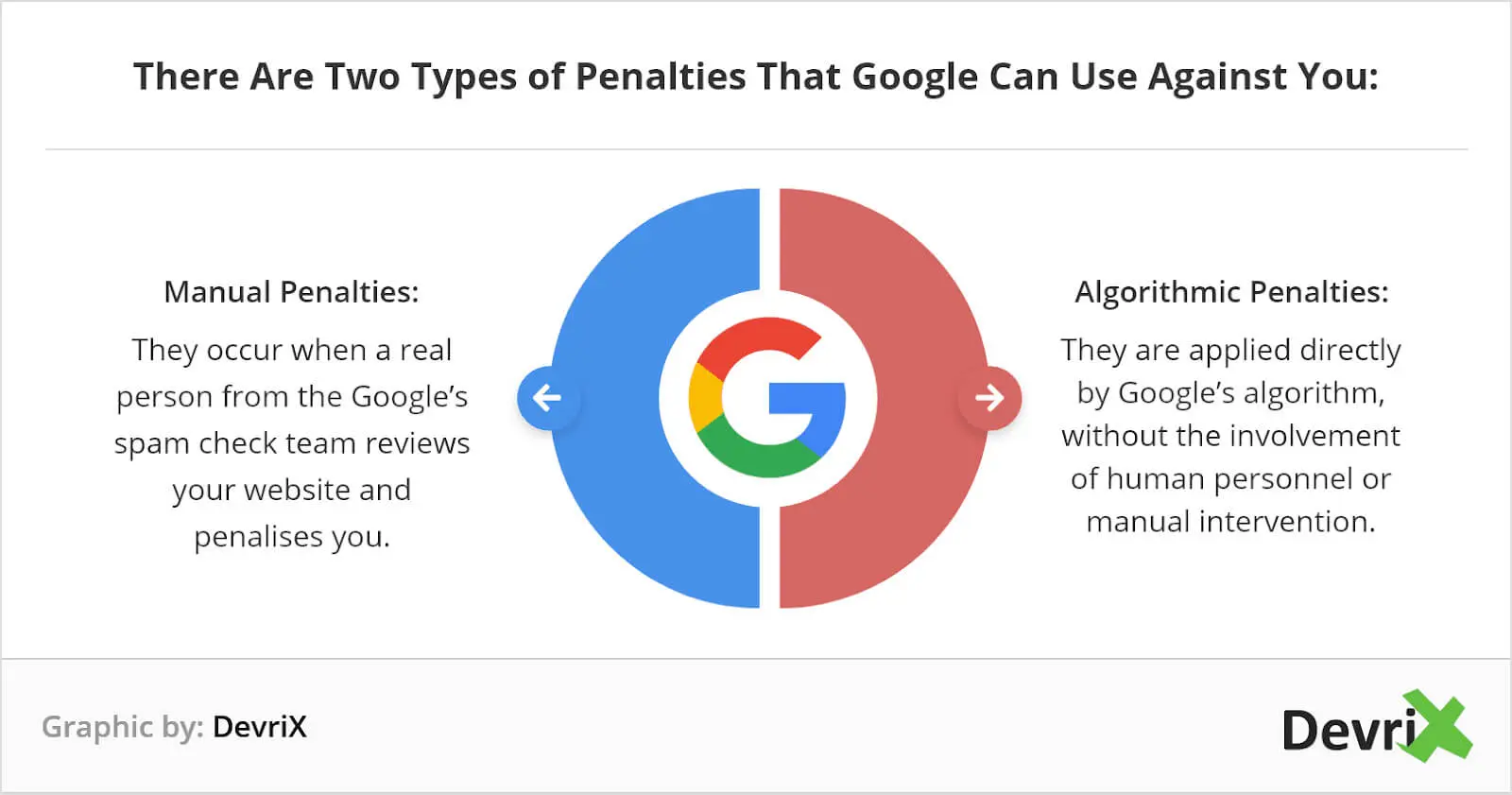
Though it might seem like an easy trick to boost SEO rankings by manipulating the system, it’s not as rewarding as it appears.
How Can You Avoid Keyword Stuffing And Use Keywords In The Right Way?
If you want your website to have a higher rank, it is best to focus on optimising the page for keywords instead of just stuffing it with keywords. Try using the target terms and keywords in the right places. Also, always focus on creating engaging content rich in information while using keywords appropriately and in context.
This section has discussed some easy steps to help you maintain a good term density by inserting the right keywords in the right place. Let’s take a look!
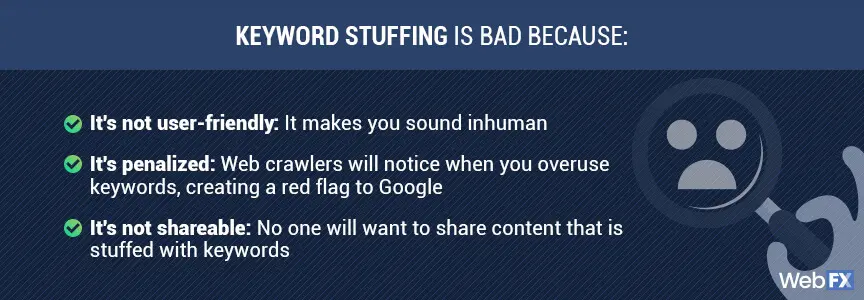
1. Assigning One Primary Keyword To Each Page
The first step of optimising your web page for search engines is to choose a target keyword. This target term will act as a catchphrase closely related to the content and highly relevant to the topic. Also, it is best to choose a popular term so readers can easily spot your content via a simple Google Search.
Use a unique target keyword for each page or blog. In that way, you can enhance the visibility of each page of your website without making them compete against one another. Once you have assigned a target keyword for one webpage or blog, please don’t use it as the primary keyword for another page on your website.
The different target keywords send a clear message to the search engines about the content of each page. Thus, it becomes easier for readers to track down the necessary information on each page without hassle.
2. Writing Content Over 300 Words
Search engines always provide the readers with the most relevant and in-depth content with helpful information. Thus, search engines are most likely to rank your page or blog post based on its length and the quality of its information.
While there’s no standard word target for determining the length of online content, it is best to write more than 300 words to make your content relevant. The bigger the content, the more authentic information you can incorporate into the copy. Also, inserting appropriate keywords in lengthy content is much easier than in smaller content.
You can avoid the problem of search term stuffing by writing a more extensive blog post. When you have more words at your disposal, using relevant keywords to optimise the content becomes the easiest.
You don’t need to stuff in extra keywords needlessly. Hence, always write lengthy content containing in-depth information to get higher ranks.
3. Using Appropriate Keyword Density
While writing online content, you have to make sure that you use the target keyword throughout the content. It should be used naturally and in the most relevant manner. Do not overuse it because that will negatively impact the readability and sharpness of your content.
Maintaining a healthy density percentage is crucial for creating engaging content. As we mentioned earlier, the density percentage tracks the number of times you use the target keyword in your content.
A high term density percentage indicates that you are overusing the target keyword in your content, which signifies keyword stuffing and can bring down the website’s rank. It is best to keep the term density percentage within 2% to follow the guidelines for the best SEO practices.
If the density percentage is below 2%, it shows good optimisation for keywords and can improve the ranking of your website.
4. Adding Secondary Keywords And More
Along with using the primary keyword throughout the content, you can also enhance the relevance and visibility of the content by using secondary keywords. Search engine bots often look for secondary keywords and phrases while ranking the page.
Now, you may ask, what are secondary keywords? They are long-tail versions and synonyms of the primary keyword, which you can insert seamlessly within your content without disrupting its flow and readability. These secondary keywords also provide a better idea to the search engine bots regarding the topic of your content.
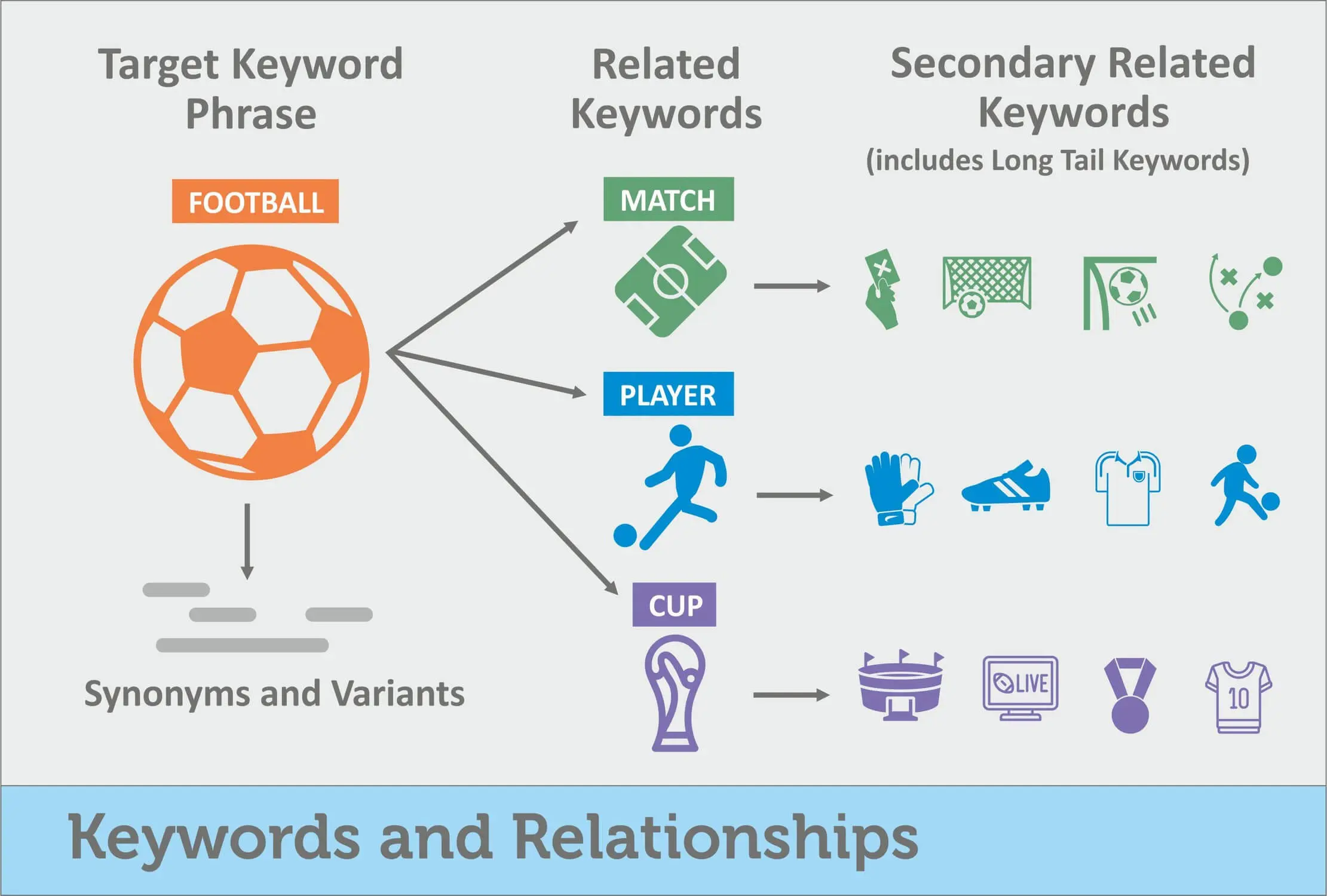
Using long-tail secondary keywords can help search engines identify different helpful information in your content.
Search engines can identify particular sections of your content that provide answers to the readers by tracking these long-tail keywords. Thus, your content gets the opportunity to be featured in the “People also ask” section of Google.
5. Placing the Right Keywords on the Right Page Element
Simply placing relevant terms in the main body of your content might not be enough to optimise your page for keywords. Optimisation also depends on using the target keyword in different page elements. Thus, to fully optimise the page, you need to insert the keyword in the following places at least once:
- Page title
- One subheading
- Title tag
- Meta description
- One image alt tag
- The first paragraph of the content body
- Near the conclusion section of your post
By including the keyword in these page elements, you can send positive signals to leading search engines so that they can quickly notice and rank your website accordingly.
6. Using Keyword Research Results
Conducting keyword research is an easy way to optimise your content for keywords. Any standard keyword research tool can help you generate a list of keywords that are relevant to your content. You can use the search results from your keyword research to avoid stuffing keywords.
Then, you can search through the list to select the most appropriate SEO keywords for your post. You can easily use related or synonymous keywords in your article and avoid repeating the same keyword repeatedly. It can be an excellent method to boost the SEO ranking of your website.
7. Checking On-Page SEO
Creating SEO-friendly online content can take a lot of work. Even if you go through all the steps to optimise the content, you can still miss specific opportunities to make the content more attuned to Google’s search algorithm. Thus, once you have published the post, it is always best to run a report to check the on-page SEO.
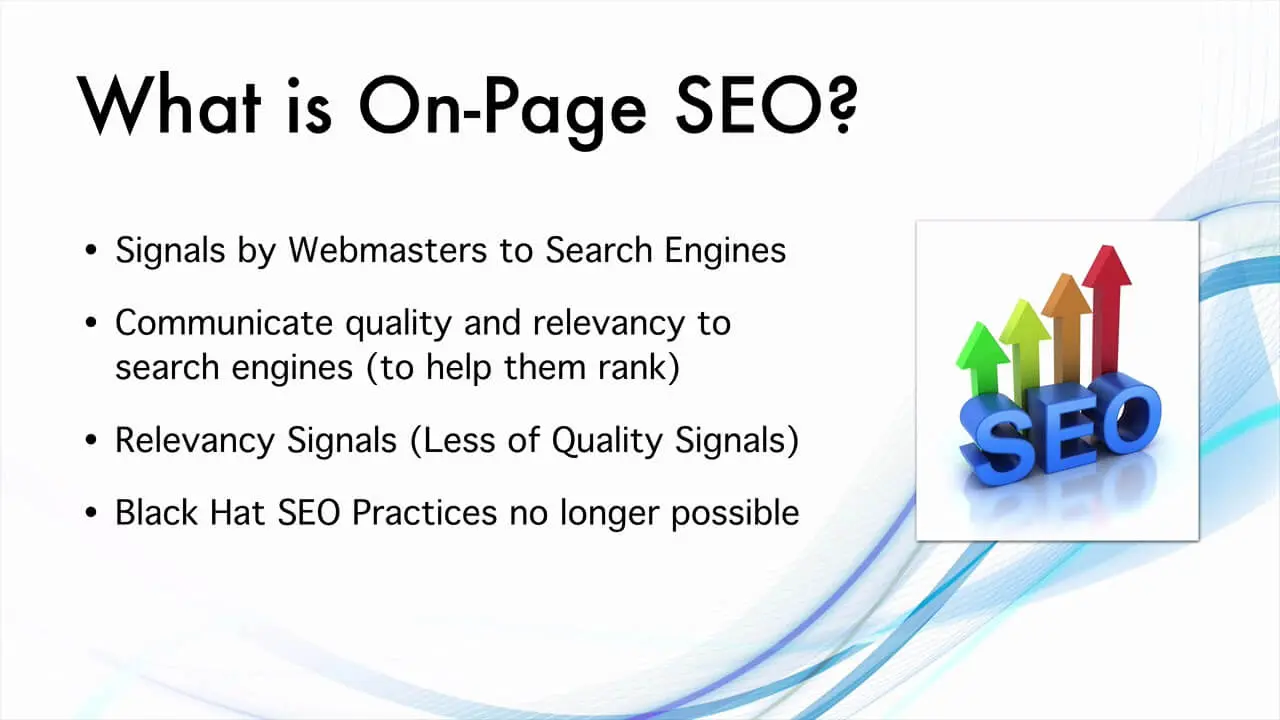
It will ensure you don’t miss any opportunity to optimise your page. On-page SEO checkers like Amazon Alexa can help you with it, so you can easily use these tools to check the SEO for your page.
How Can Improve Keyword Strategy Help In Improving Your SEO Rankings?
Simply stuffing your page with random and unnecessary keywords will do you no good in improving the SEO rankings of the page. You must perform thorough research to find the right keywords relevant to your content and add value to the content.
Also, repeating the exact keywords will only result in boring content that will drive the readers away. So, to make your content engaging and interesting, it is best to use synonyms and long-tail versions of your primary keyword. This way, the content will have a seamless flow that can help attract more readers.
On top of this, you have to think carefully before placing the keywords. To optimise your content, you should insert each keyword in the right place of the main body and the page elements. Thus, you can ensure the page ranks above competitors by improving your keyword strategy and avoiding keyword stuffing.
Perfecting Keywords For SEO
When trying to establish a career in content marketing, you must know all the tips and tricks for creating information-rich, keyword-optimised content. After going through our article, we hope you have a better idea of avoiding stuffing keywords.
We’ll suggest that you try and search for different relevant keywords whenever you’re writing new content. That way, you don’t have to repeat the same keyword throughout the website.
Also, insert the keywords as naturally and seamlessly as possible. Don’t add extra keywords to improve the SEO rankings of your page, as it might do more harm than good.
And on that note, we’ll be signing off. If you need assistance producing content for your website, contact our team at sitecentre®.
Take care, and we’ll see you next time!





